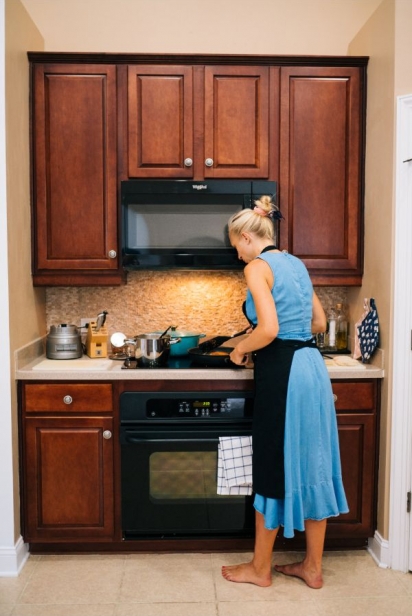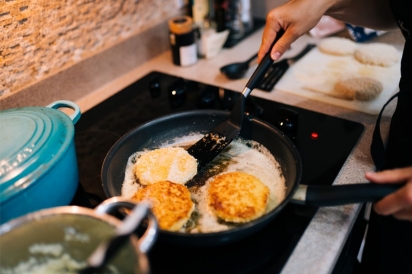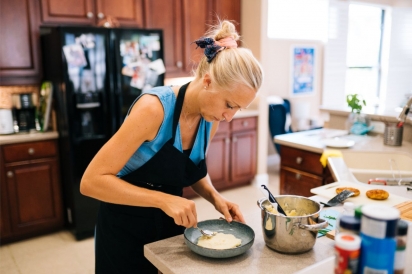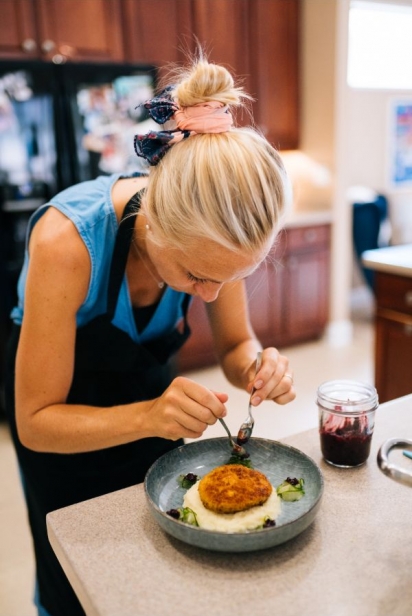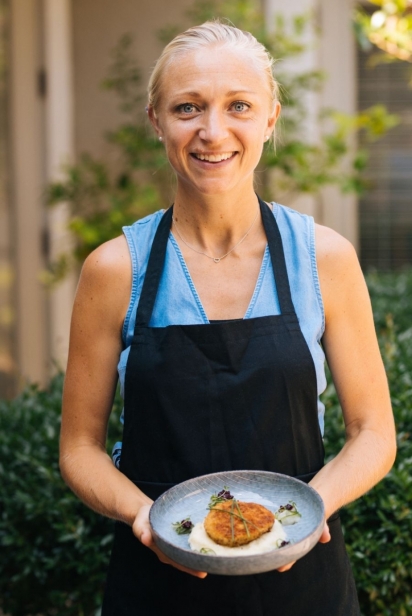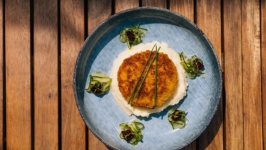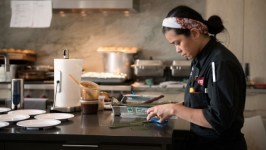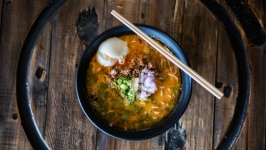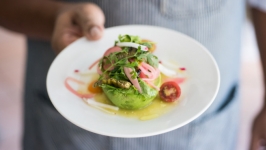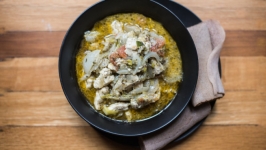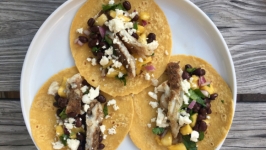A Scandinavian in Jacksonville
Growing up in Sweden, I spent most of my life in Scandinavia, though I’ve also had the opportunity to live in Switzerland, Canada and Germany. In 2018, as a result of my husband’s job, we moved to Jacksonville, which may seem like quite a shift from Sweden, Norway and Denmark. This transfer, however, was not a hard decision for us because we love to discover new countries and cultures. Now, with our infant daughter Filippa, we are learning about life, and food, in Northeast Florida.
Food has always been a big part of my life. Every day after school, I would ask my mother if I could bake something or prepare dinner. As I grew, my older brother, who also loves to cook, taught me more about using sustainable ingredients. That early experience led me to a career in the food industry. Several months ago, I started Scandinavian Simple Eating, a blog intended to inspire Americans to learn about Scandinavian cuisine. Simultaneously, as I explore Jacksonville, my understanding of local culinary practices and ingredients is also increasing. While there are many differences, it’s been surprising to discover a good deal of commonality between my traditional cuisine and that of my new home.
What is Scandinavian food?
Scandinavian, or Nordic, food is cuisine from Sweden, Norway and Denmark. The deep historical roots of this regional food is related to its natural environment, ranging from farmlands to forests, long coastlines and a multitude of rivers and lakes. Culinary traditions are based on the access to local, seasonal ingredients. Although the three countries encompass a vast land area, the total population of Scandinavia is roughly 21 million. The open space allows for a strong hunting and fishing culture. Seafood is an often-used ingredient in Scandinavian cuisine, including salmon, perch, herring, cod, trout and shellfish. Other common ingredients are pork, poultry, beets, potatoes, cucumbers, dill, parsley and horseradish.
Given the big variations between seasons, Scandinavians use a variety of methods for storing food, which ensures local products are available year round. With the humid continental climate, winters are long, dark and cold while summers are most often light, warm and dry. Food preservation is seen not only as a way of extending shelf life, but also adding flavor. Fruits and berries are cooked and preserved, vegetables pickled, mushrooms dried, meat and fish smoked, salted, fermented and marinated. Scandinavians prefer long-lasting breads such as sourdough, dark rye and crisp bread.
Even if the cuisine sounds relatively traditional, Scandinavians make it modern and experiment with new food ideas, often taking a time-honored ingredient to use in an innovative way. With help from great Scandinavian restaurants and internationally acclaimed chefs, Scandinavian food has grown in popularity beyond the region. Danish Chef René Redzepi of Noma, a Michelin-starred restaurant in Copenhagen, has earned accolades for his reinvention and interpretation of Nordic Cuisine, especially the use of fermentation as a preparation technique. Chef Mathias Dahlgren, one of the most successful chefs in Sweden, is famous for his natural cuisine based on local organically grown produce and authentic flavors. Another inspiring Swedish chef, Paul Svensson, is well-known for his green gastronomy in which he focuses on seasonal produce and zero-waste food preparation.
Adapting Scandinavian Cuisine to Florida
What I have discovered in the short time I’ve lived in Jacksonville is that, with some creativity, it is indeed possible to cook my favorite recipes in Northeast Florida. By replacing some hard-to-find ingredients with items that are more commonly available here, I can prepare dishes that reflect the original idea behind the recipe. In fact, experimenting in the kitchen and putting my own twist on traditional foods is one of my favorite pastimes, whether I am in Florida or Scandinavia.
People dine out more frequently here than in Scandinavia, where restaurants are more expensive. Scandinavians are more inclined to cook at home on a regular basis, and kitchens are seen as a family room where everyone, including the kids, can help to prepare dinner. Another difference I have noticed is that many people in Northeast Florida have gardens and grow their own vegetables and herbs. In Scandinavia, this is not so common in large cities. One staple product I haven’t been able to replace yet is Scandinavian bread. We eat a lot of bread, made from flours like rye, graham and spelt. In Denmark, an “open sandwich” can become food art with the different ways ingredients are used as toppings on a slice of bread.
Yet I also find similarities between Scandinavian and Floridian cuisine. A great example is the availability of fresh seafood in Jacksonville. Fish is a main ingredient in my native cuisine, and fortunately I realized soon after I moved to Florida that I would be able to find a lot of great fish here. The extensive local variety has been inspirational, and I am excited to use seasonal fish in my Scandinavian recipes.
The recipe I created for Scandinavian Fish Cakes is based on a traditional Swedish dish called Wallenbergare. The original version of this recipe is made with veal but easily adapted to use local fish. The flavors are common in Swedish cooking – butter, nutmeg, white pepper, allspice and cloves. The side dish features potatoes, (a food staple of Scandinavia), pickled cucumbers (instead of peas) and local blackberries, which replace Swedish lingonberries.
While much is different here, I am learning how to adapt my food and recipes to incorporate the best elements of Northeast Florida’s food culture.
Learn more about Scandinavian cuisine on Anette's blog Scandinavian Simple Eating.



